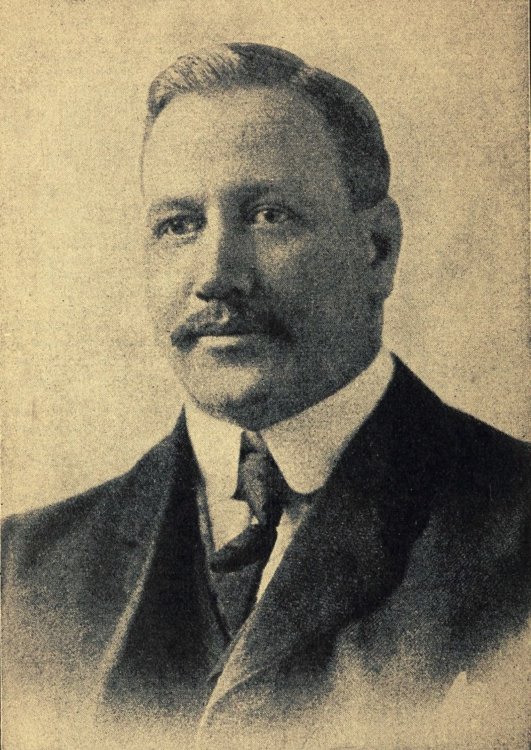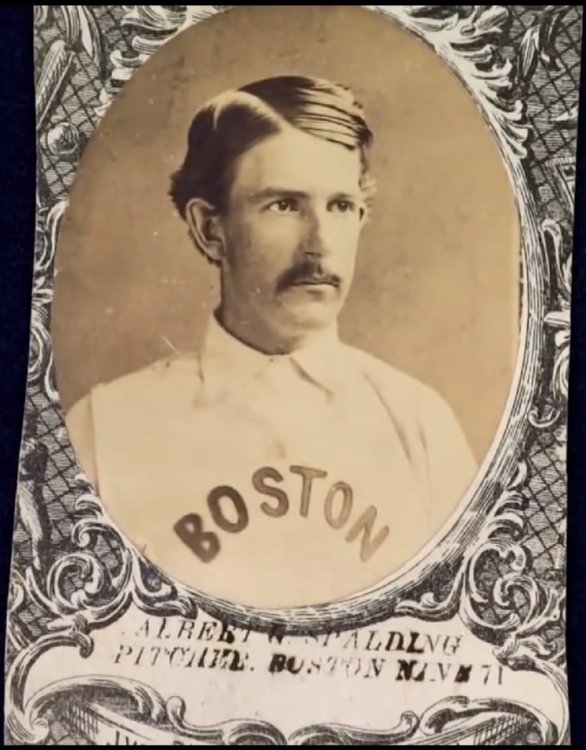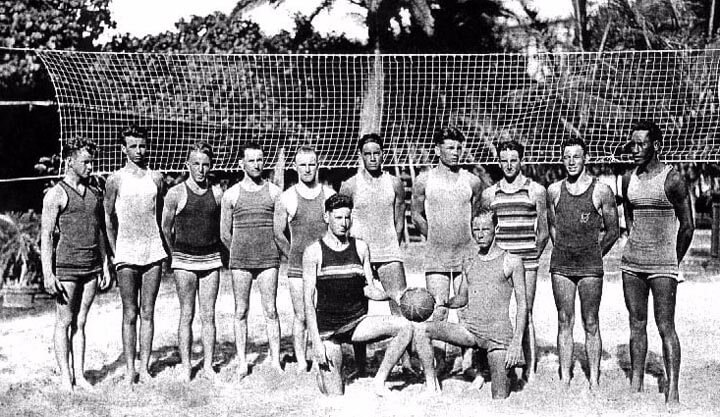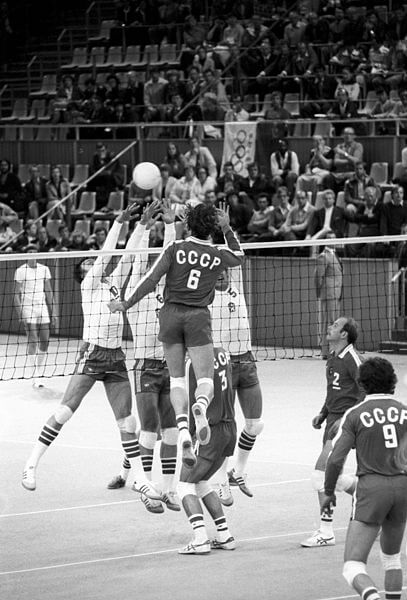Ah, beach volleyball. The sport we know and love. You may be able to tell a legal hand set from a deep dish set from a mile away, but do you know how we got to the point where we can debate such things? The history of the sport goes further back in time than you might think. Read on so you can school your friends on the roots of the greatest game on the planet.
Where was volleyball born? (…on the East Coast… as Mintonette.)
On February 9, 1895, William G. Morgan created a sport he called “Mintonette.” For those of you who are up on your hoops’ history, basketball was invented just four years before (William Morgan had, in fact, met basketball founder, James Naismith not long before this). Morgan was a recent graduate of the International YMCA Training School in Springfield, Massachusetts, now known as Springfield College. In 1895, Morgan was working as a physical education director at the Holyoke, Massachusetts YMCA. His intention was to create a sport that involved, unlike basketball, “a strong athletic impulse, but no physical contact.” (Don’t be offended basketball stars, but we DO think our sport requires more athleticism 😉) In other words, he wanted a sport that would entertain, but also relax.

To achieve this goal, Morgan combined elements from basketball, badminton, baseball, tennis, and handball. In fact, the first Mintonette net was a standard tennis net, standing at only 6’6” high (regulation height for a volleyball net is now 7 feet, 4 ⅛ inches for women and 7 feet, 11 ⅝ inches for men). At this time, players used a basketball (ouch) or a basketball bladder; a ball specifically designed for volleyball would not be created until 1900. Two friends of Morgan’s, Dr. Frank Wood and John Lynch, drew up the first 10 rules based on suggestions from the founder. The new game was meant to be played in gyms or exercise halls, but could also be played outside.
The equipment wasn’t the only big difference between that game and the sport we now know today. An unlimited number of players could be on each side of the court at any given time (if you wish you could be out there on Stadium with your favorite AVP pro, you’re only about 125 years too late). Their court, at 25’ x 50’, was also smaller than ours today. Inspired by baseball, a match was made up of nine innings; each team served three times per inning. How did six-serve innings last longer than five minutes? The number of touches was unlimited back then (it wasn’t until 1922 that the three hits per side was put into place). Oh, and if your serve didn’t quite reach or get over the net, your teammates could step in and help it cross the net. Must be nice.
As for the name, Professor Alfred T. Halsted rechristened the sport as ‘volleyball’ in 1896, based on his observation that the players volleyed the ball back and forth. As a result, the first official game of volleyball was played on July 7, 1896 at Springfield College.
Growing the Game: How Did Volleyball Become International?
Remember that specialty ball that had yet to be created? Let’s fast forward to the turn of the century when it was obvious that a basketball wasn’t going to do the trick. The ball had to be light enough to stay airborne, but heavy enough that it wouldn’t get carried away by the wind or slow down the game.
 Morgan turned to A.G. Spalding and Brothers, who created a ball with a thick rubber bladder encased in subsequent layers of cloth and leather. Interesting side note: This was just one of many notable achievements notched by Albert Spalding, a Hall of Fame pitcher who also developed the first basketball and American football. Thanks to that guy, the first volleyball was born.
Morgan turned to A.G. Spalding and Brothers, who created a ball with a thick rubber bladder encased in subsequent layers of cloth and leather. Interesting side note: This was just one of many notable achievements notched by Albert Spalding, a Hall of Fame pitcher who also developed the first basketball and American football. Thanks to that guy, the first volleyball was born.
It wasn’t long before Morgan’s sport spread, buoyed by the YMCA’s physical education directors adopting volleyball in all the institution’s societies throughout the U.S., Canada (Canada was the first foreign country to adopt the game), and in many other countries (Japan in 1908 and the Philippines in 1910, plus Burma, China, India, Mexico, and nations in South America, Europe, and Africa). Volleyball was even included in the program of the first Far-Eastern Games, held in Manila. The Philippines, in fact, were responsible for creating the standard of setting and spiking in 1916.
1916 was also the year when the net height was raised and the ball was made heavier. At that point, the Spalding Volleyball Guide estimated that the number of people playing volleyball in the U.S. had reached 200,000. Additionally, the YMCA and NCAA partnered to promote volleyball, resulting in the sport’s inclusion in high school and college physical education programs across the country. In 1917, more change came with sets being played to 15 points instead of 21. Matches became best two-out-of-three. Then, the following year, the number of players per team was limited to six. In 1922, twenty-seven years after the foundation of the sport, the first YMCA national championships were held in Brooklyn, NY. Fittingly, twenty-seven teams competed (no word on whether that was purposeful).
Further legitimacy came in 1928 when the United States Volleyball Association (USVBA) was established by the YMCA to formalize and standardize rules for the sport. The first U.S. Open was held the same year, with non-YMCA squads invited to participate. Then, finally national volleyball referees were approved and recognized in 1934.

But when did beach volleyball start?
1930 was a good year, in at least one respect: the first two-man beach volleyball game was played! The team sport, however, likely originated in Hawaii in 1915 when the Outrigger Beach and Canoe Club began playing on Waikiki Beach (Was that the Crabb brothers?!?) However, it wasn’t until 1965 that the first beach volleyball association was formed, and as you might guess, it was established in California: the California Beach Volleyball Association, or CBVA. The second major group to be formed came in 1983, when professional beach volleyball players came together as a players’ union called the Association of Volleyball Professionals (the AVP— maybe you’ve heard of it).
The AVP first started with just a men’s tour, established in 1984. The first women’s pro tour was hosted by the Women’s Professional Volleyball Association (WPVA) in 1986 (AVP events for female athletes didn’t begin until 1993…we know, we are sorry and regret this). Commence many decades of amazing action and countless legends battling it out on the sand. In terms of equipment, we use the Wilson game ball as our gold standard— if you somehow missed the announcement about the new AVP OPTX game volleyball that you’ll be able to get your hands on soon, catch yourself up before the official release!

When was volleyball entered into the Olympics?
In 1957, indoor volleyball was deemed an Olympic sport by the International Olympic Committee, and in 1964, it was introduced at the Olympic Games in Tokyo. That’s right— we’re coming full circle with the 2020 Games. Heart-warming! However, as we’ve already reviewed, volleyball had existed at an international level for decades by the time the 1964 Games rolled around. It doesn’t get more official than the FIVB (Federation Internationale De Volley-Ball), which was founded in France in 1947. Just two years later, the inaugural World Championships were held in Prague, Czechoslovakia.
Aside from the launch of the first pro beach volleyball tour, 1984 is also a significant year as it was the first time that USA’s indoor national team medaled at the Olympics (both the men and women took home hardware). Suitably, those Games were hosted in Los Angeles. This milestone in American sports history set off a period of heightened popularity for indoor volleyball in the U.S. In 1996, the Olympics took place in the U.S. again, this time in Atlanta. In that special year that we will cherish forever (doesn’t everyone?), two-man beach volleyball was officially introduced to the Games.
And the Rest is History
Today, there are more than 800 million volleyball players worldwide. Though both indoor and beach were born in America, just 46 million of those 800 million players are in the U.S. That’s a huge testament to the power of this sport and the devotion it has inspired around the world since the beginning of the 20th century. To circle back to the Olympics, as we continuously find ourselves doing ahead of Tokyo 2020, beach volleyball is still going strong 33 years after debuting in Atlanta. With athletes around the world competing for coveted spots at the Games right up through June 2020, this is a battle that will go down to the wire. As for top notch beach volleyball in the U.S., you can find an AVP beach near you when we return for the 2020 season. Stay tuned!
